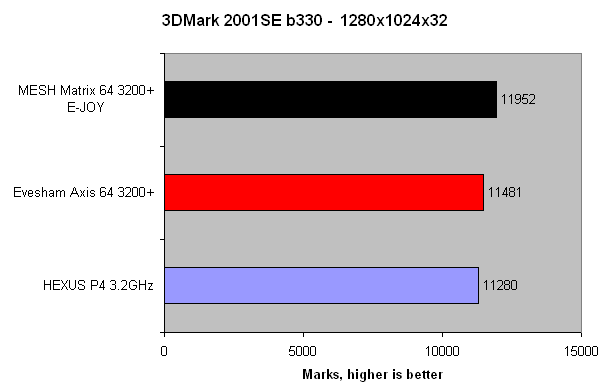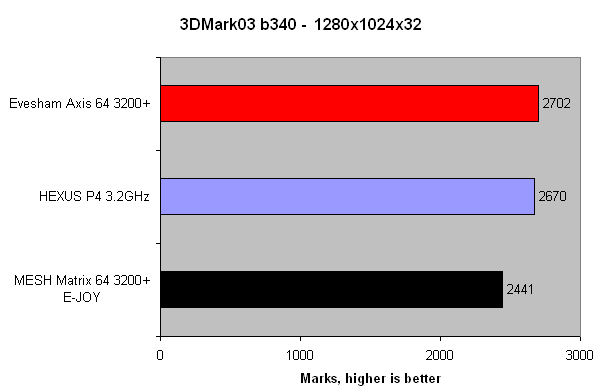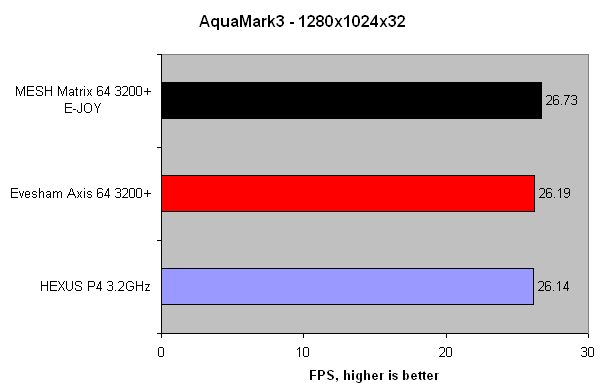3DMark 2001SE, 3DMark03, AquaMark3
Gaming benchmarks, as mentioned, are run at the TFTs' native resolution of 1280x1024. We've reviewed both the NVIDIA FX 5700 Ultra and Radeon 9800SE AIW here and here. Head over to those links if you need to acquaint yourself with what makes each card tick. As you'll see, Ryszard found the FX 5700 Ultra, as specified by MESH, to be an excellent midrange performer. The Radeon 9800SE AIW was an excellent card in its own right, especially if the user required more than bare pixel-pushing power. Thoughtful choices from the two system integrators. The benchmarks will focus on sheer speed, so as to put the Radeon 9800SE AIW at a disadvantage. Please take into account its extra features before forming a conclusion.
The huge core and memory speeds of the FX 5700 Ultra (475/900) are tempered by the Evesham 9800SE AIW's use of a 256-bit memory bus. There's not much in it at the outset. The extra grunt of the Athlon 64 3200+ allows it to add around 200 marks to the comparison Pentium 4 setup's scores. Anything over 10,000 marks at this resolution is impressive. You could expect to add in antialiasing with anisotropic filtering and have playable framerates in most games.

The latest build of 3DMark03 does the FX 5700 Ultra card no favours at all. NVIDIA's DirectX 9 implementation has always been a sore point. Evesham's machine comes out on top in this showcase of dazzling effects.

Things are almost even as far as AquaMark3 is concerned. A bombardment of DX9-specific features helps the Evesham AIW gain parity from a base design that shouldn't be as powerful as the MESH gamers' card.









